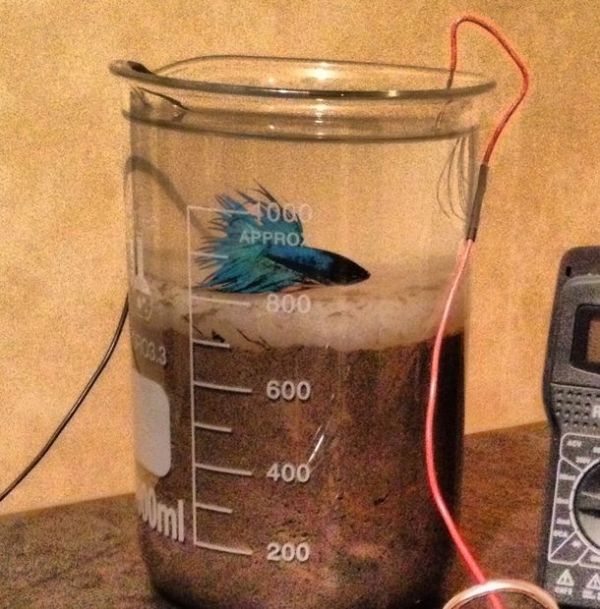Anyone can strap a two-stroke engine on a bicycle to create a moped. But [robinhooodvsyou] has created something infinitely more awesome. He’s built an inverted open crank engine on a 10 speed bicycle. (YouTube link) As the name implies, the engine has no crankcase. The crankshaft, camshaft, and just about everything not in the combustion chamber hangs out in the open where it can be seen and appreciated.
[robinhooodvsyou] started with an air-cooled Volkswagen cylinder. He filled the jug with a piston from a diesel car. Camshaft, flywheel, valves, and magneto are courtesy of an old Briggs and Stratton engine. The cylinder head, crankshaft, pushrods, and the engine frame itself are all homemade.
Being an open crank engine, lubrication is an issue. The crankshaft’s ball bearing is lubricated by some thick oil in a gravity fed cup. Even though the engine is a four-stroke,[robinhooodvsyou] adds some oil to the gas to keep the rings happy. The camshaft and connecting rod use Babbit bearings. While they don’t have an automatic oiling system, they do look pretty well lubricated in the video.
Starting the engine is a breeze. [robinhooodvsyou] created a lever which holds the exhaust valve open. This acts as a compression release. He also has a lever which lifts the entire engine and friction drive off the rear wheel. All one has to do is pedal up to cruising speed, engage the friction drive, then disengage the compression release.
We seriously love this hack. Sure, it’s not a practical vehicle, but it works – and from the looks of the video, it works rather well. The unmuffled pops of that low 4:1 compression engine reminds us of old stationary engines. The only thing we can think to add to [robinhooodvsyou’s] creation is a good set of brakes!


















